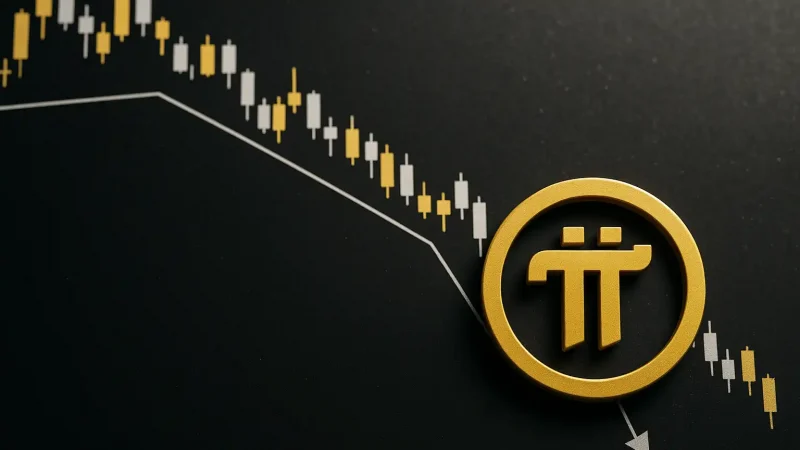In a bold move signaling the continued fusion of traditional finance with decentralized technologies,
asset management giant VanEck has formally filed an S-1 registration with the U.S. Securities and Exchange Commission (SEC)
seeking approval for the first-ever exchange-traded fund (ETF) tied to Lido Staked Ethereum (stETH).
The proposed VanEck Lido Staked ETH ETF would give institutional and retail investors regulated exposure
to Ethereum staking rewards—an activity previously restricted to crypto-native users navigating technical hurdles or opaque platforms.
If approved, it has the potential to establish stETH as a gateway asset for DeFi adoption inside conventional investment portfolios.
VanEck’s Strategic Leap into Liquid Staking
According to a recent announcement by VanEck,
the ETF will track the MarketVector Lido Staked Ethereum Benchmark Rate—an index created to reflect the spot value and income-generating yield
available through stETH. By packaging liquid staking returns into a structured security, VanEck taps directly into one of the fastest-growing
verticals in Ethereum’s evolving architecture.
The ETF is designed for investors seeking passive income via staking while avoiding the illiquidity risks associated with traditional ETH2.0
staking protocols. Importantly, this comes with the tax efficiency and regulatory clarity that ETFs provide.
As @WuBlockchain reported, this product would be the first of its kind
in the U.S. to provide exposure to a liquid derivative of staked Ethereum via a compliant financial instrument—potentially
setting a precedent for future DeFi-integrated ETFs.
Why Lido’s stETH Is More Than a Token
At the heart of this proposal lies stETH—a liquid staking token minted when users stake Ethereum through Lido, a decentralized
protocol that controls nearly 40% of all ETH staked on the Ethereum network. This isn’t just another alt-token; stETH represents a capital-efficient
alternative to direct staking by providing yield without compromising asset mobility.
With over $40 billion in total value locked and $2 billion in rewards distributed to date,
Lido is far from experimental. It boasts battle-tested smart contracts, support from major custodians like Fireblocks and Anchorage,
and broad integrations across the decentralized finance ecosystem.
Kean Gilbert, Head of Institutional Relations at the Lido Ecosystem Foundation, noted that VanEck’s filing “demonstrates how
on-chain liquidity and off-chain regulation can harmonize”—a sentiment shared by many DeFi proponents eager to see mainstream finance
adopt Ethereum-native infrastructure.
Liquidity Without Lock-Up: The ETF Advantage
Traditional staking mechanisms have long been criticized for capital inefficiency. Lock-up periods—once as long as 12 months
on Ethereum pre-Shanghai upgrade—discouraged institutional investors from participating. Even post-upgrade, withdrawal queues and
validator churn add layers of friction.
VanEck’s ETF proposal cleverly sidesteps this. Since stETH is liquid and transferable, fund managers can efficiently
onboard and offboard stETH in response to investor demand, preserving the liquidity ETF buyers expect.
This turns what was once a cyclical DeFi mechanic into a product with daily liquidity, real-time pricing, and simplified tax overlays.
As of this publication, Lido’s governance token, LDO,
trades around $0.92, up 3.43% in the past 24 hours—possibly reflecting optimism from the ETF news and broader market anticipation
around regulated staking products.
Regulatory Testing Grounds
The SEC’s response to VanEck’s filing will serve as a litmus test for how regulators interpret liquid staking tokens
within the securities framework. With the agency historically cautious toward crypto ETFs—evidenced by its long delays
in approving spot Bitcoin and Ethereum ETFs—stETH presents a more complex puzzle.
Unlike Bitcoin, whose merit as a non-interest-bearing asset is settled, staking tokens involve yield generation,
potentially pushing them closer to regulated securities. Whether the SEC sees stETH as a derivative security or a
technology-enhanced yield asset will be crucial in determining the ETF’s fate.
A Catalyst for Ethereum’s Institutional Maturity?
Should the ETF gain approval, it would mark a pivotal moment for Ethereum’s ecosystem. It would not only validate stETH
as a financial building block but could also invite a wave of similar products built around decentralized staking platforms.
More than financial exposure, the VanEck stETH ETF represents symbolic convergence—where DeFi’s promise of yield without banks
finds common ground with compliance-driven asset managers. For Ethereum, that may mean an influx of slow-but-sure institutional capital,
further entrenching it as the programmable backbone of future finance.





